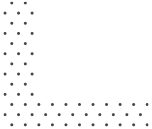How inspired are your students to engage in future sustainability action?
How effective were the components of this kit?
Please provide 2+ examples of student voice on the kit's impact on them
"Wow we found so much rubbish! I even found a rusty saw" "I had to look really carefully there was lots of fishing line hiding in the seaweed on the beach"
Which kit components were the most impactful and why?
The gloves and poster we filled in after the sorting, The children were motivated and excited to pick up rubbish, wearing their gloves meant they were happy to get involved and not fearful of touching rubbish. The poster was great we sorted what we found and there was lots of discussion as they were sorting it. The poster helped to guide the sorting.
How many bags of rubbish did your class collect?
When compiled together we filled two very full bags. (This was over 2 sessions of walking around the neighbourhood)
How has this kit impacted your class culture toward whenua ora (land wellness) and sustainability?
They are very aware how our rubbish getting into waterways can impact the sea life if it makes it way to the sea. They are more mindful about picking up rubbish when they see around school and disposing of their rubbish from their lunchboxes more carefully.
What is the legacy this kit will leave behind on your learners?
The memories of cleaning up our neighbourhood especially along the beach. Many locals would stop and talk to them about what they were doing the children were excited to share their findings.
How high was student engagement throughout this kit?
What was the latitude and longitude of your clean up? (from Sea Cleaners poster)
Latitude -36.601749 Longitude 174.69909 (Red Beach Area)
What was your cleanup location type?
Creek, Green Space, Reserve, Park, Beach
Which of the following types did your class collect?
Plastic Bag, Plastic Bottles, Food Wrappers, Straws, Tyres, Household Waste
What was the most interesting piece of rubbish found and why?
A Rusty saw because we found it in a local park near a playground. The children thought it was odd to find such rubbish in a public park rather than near a building site.

